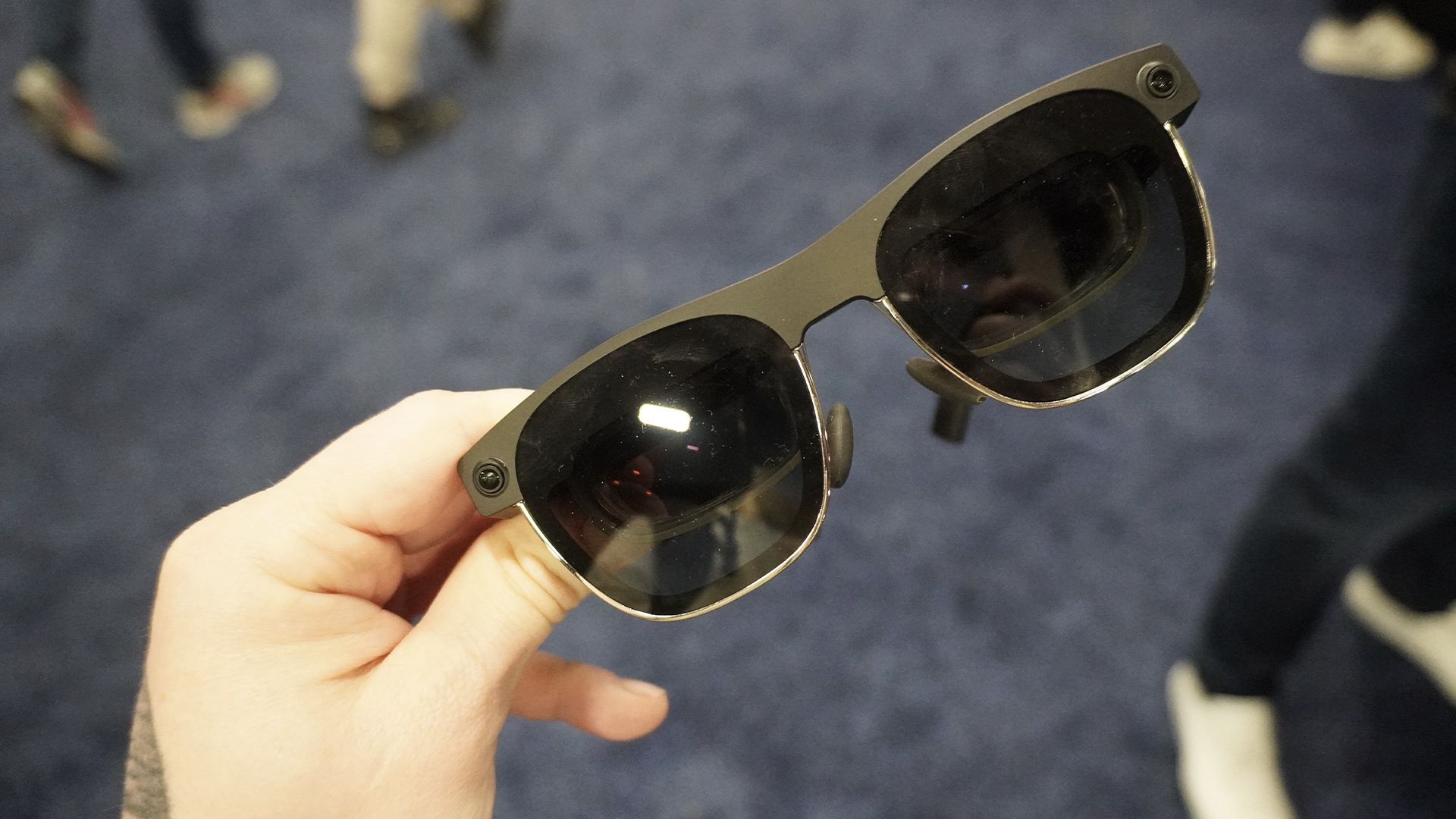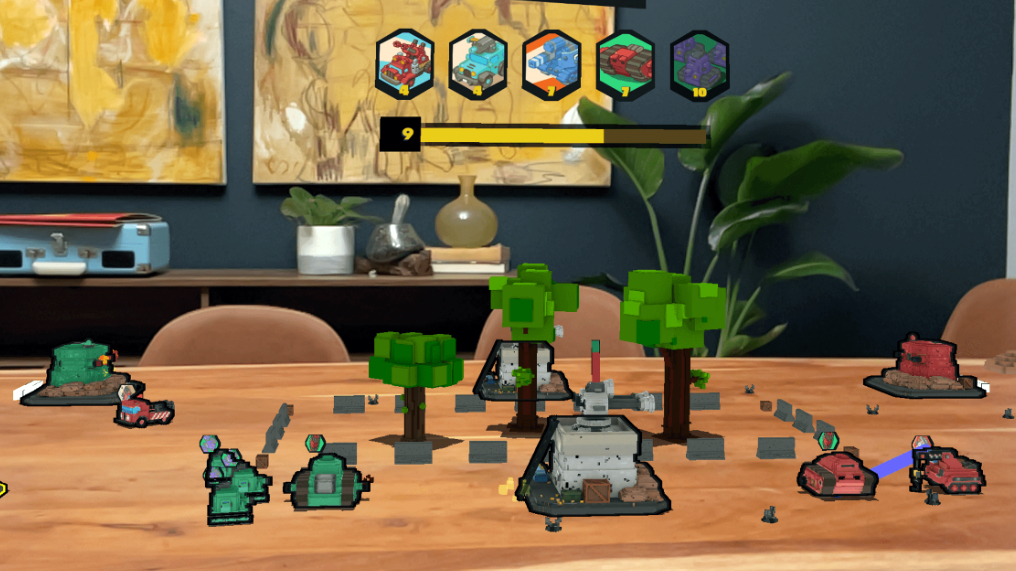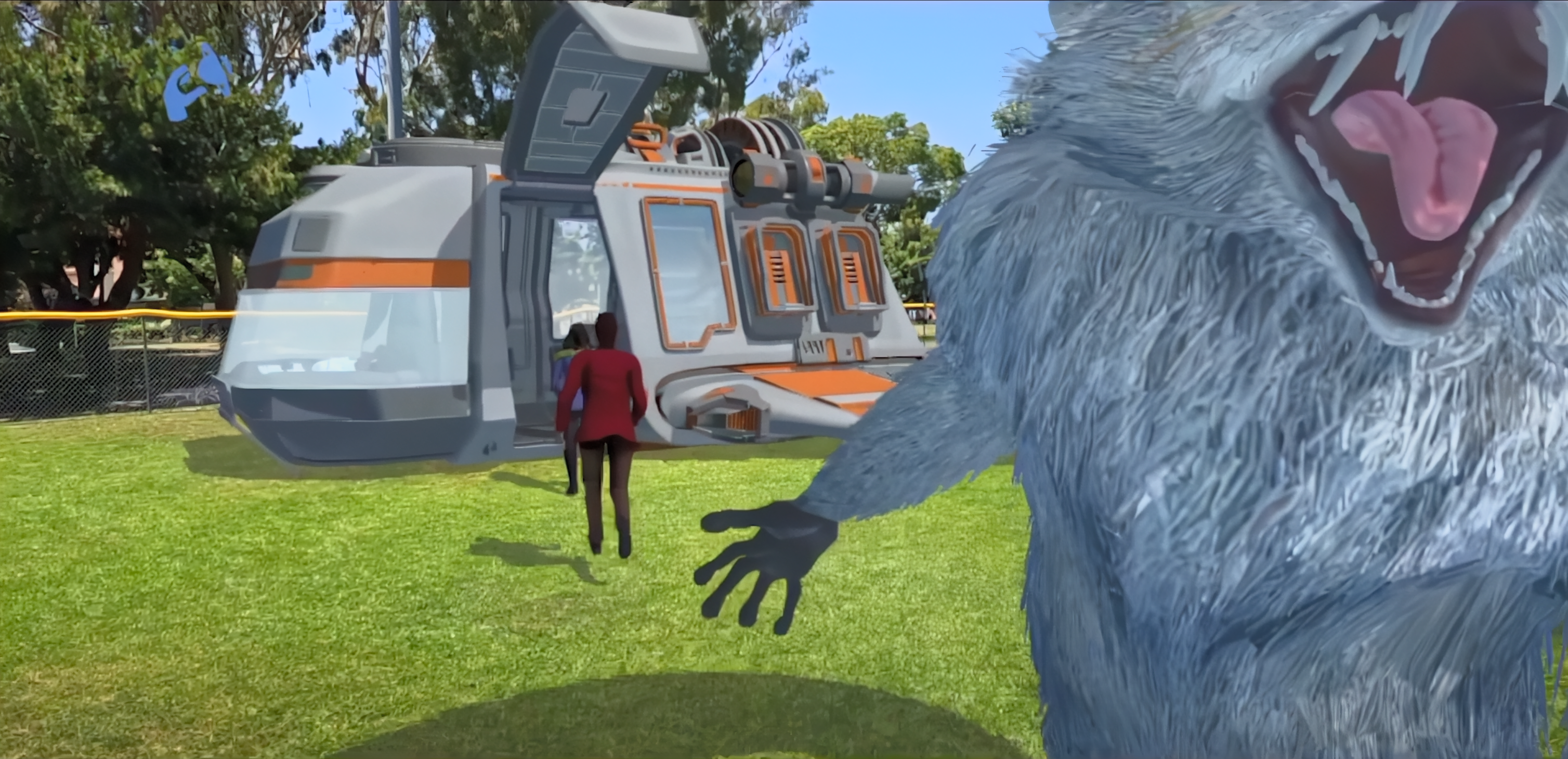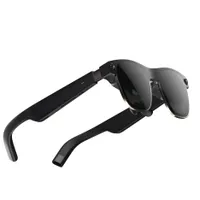I just saw the future of mobile gaming through AR glasses, and it looks wild
The future of AR gaming looks pretty bright through these shades

The Game Developers Conference was held recently in San Francisco, and tens of thousands of game makers descended on the city to talk shop and showcase what they've been working on.
It's an event aimed at game makers rather than game players, but there's always a few companies at GDC looking to showcase their latest products. That's how I ended up wandering around GDC 2024 with a pair of augmented reality glasses perched on my face.
I was there specifically to check out the Xreal Air 2 Ultra AR glasses, which are slated to start shipping in April 2024 at a starting price of $699. That's a significant chunk of change to drop on a pair of fancy glasses, but after hearing my colleague Jason England wax poetic about using Xreal AR glasses with his Steam Deck on long flights I had to try them for myself.

And I have to tell you, I was impressed. I've been demoing AR glasses in various forms of development for over a decade now, and Xreal's Air 2 Ultra delivers the best experience I've had yet. We've come a long way since Google Glass, and the Air 2 Ultra sold me on the comfort of having a pair of specs that superimpose an image of whatever it's plugged into over your view of the real world.
I've been demoing AR glasses in various forms of development for over a decade now, and Xreal's Air 2 Ultra delivers the best experience I've had yet."
The ergonomic benefit alone is a huge deal for me, since I'd love to fly with a Steam Deck but hate the thought of having to hold the thing up in front of my face (or crane my neck down to look at it) for hours at a time. With the Xreal glasses, I can keep the Deck in my lap wherever it's comfortable and see what I'm playing perfectly fine, wherever I happen to look. That freedom to move your head around without losing sight of your work feels lovely after decades of hunching over a laptop on planes, trains and hotel room tables.
Xreal Air 2 Ultra AR glasses: $699 @ Xreal
The Xreal Air 2 Ultra AR glasses are the company's most advanced yet, sporting 3D cameras that allow them to do up to 6DOF motion tracking as well as supporting passthrough for video from devices like your laptop or Steam Deck. They're available for pre-order from Xreal at time of publication, with plans to ship in April 2024.
But Xreal's glasses have had that capability for a while now, and you can take advantage of it on cheaper models that don't offer the Xreal Air 2 Ultra's advanced spatial computing capabilities, enabled by the pair of 3D cameras mounted to the frame.

This tech seems nascent but promising, and during my brief demo experience I had a chance to play AR games running on a phone through the glasses. I played a few rounds of DB Creations' tabletop tower defense game Table Trenches on an actual table, and it worked pretty well once I got the hang of using gestures to select my turrets (which were superimposed on the table and appeared to be hovering slightly above it) and build units.
Get instant access to breaking news, the hottest reviews, great deals and helpful tips.
While the hand tracking was still a little tetchy as the team works to fine-tune it, the fact remains I could pop these glasses on, plug in a phone and start playing a cute tower defense game that appeared to be happening on the table in front of me.

I also had a chance to play an AR game through the Xreal Air 2 Ultras that required me to actually walk around and interact with virtual objects around the room. The game was an early prototype called Landing Party, developed by Monsarrat to be a sort of low-impact sci-fi walking game meant to be played outdoors. Landing Party basically superimposes characters, enemies, objects and objectives on the real world, and while playing you need to walk around to get to objectives, interact with characters or combat enemies. If you bump up against a virtual object, the phone will actually buzz a bit and you'll see the object get pushed back away from you, a small detail that helped make the game world feel a bit more real.
It's a neat idea, and you can watch this gameplay overview video to get a sense of how it actually plays. While it was obvious that what I played is an early demo and not a final product, the promise is clear. I walked from outside the Moscone Convention Center in San Francisco to an indoor hallway, then walked up and down the halls trying to complete objectives like "get to the landing shuttle" or "move these doohickeys around" while occasionally pointing and shooting a laser pistol (using the phone in my hand as a stand-in) at a big, aggressive alien to keep it away.

I must have looked a little silly to anyone walking by, and there are definitely some clear hurdles to these sorts of AR games becoming popular. I was afraid to take the game too seriously lest I risk accidentally bowling over a passerby, for example, and it's hard not to feel a little silly when you're wandering around a public space interacting with things that aren't there.
But then again, between the Pokemon Go craze and the recent trend of people wearing $3,500 Apple Vision Pro headsets around in airports, I think the bar for looking silly in public has dropped significantly. And to developer Monsarrat's credit, Landing Party is a pretty slow-paced, chill game that doesn't expect you to move quickly or wildly wave your arms around.
I walked up and down the halls trying to complete objectives like 'get to the landing shuttle' or 'move these doohickeys around' while occasionally pointing and shooting a laser pistol — using the phone in my hand as a stand-in."
The game is also designed to accommodate play in a variety of public and private spaces, so it has an easy-to-use system that allows you to tap and move the boundaries of the game space until they play nicely in the real world. This proved to be a key feature when I found myself repeatedly being asked to walk towards a landing shuttle that happened to be on the other side of a glass wall, for example, as I could just tap and hold a button on the phone to drag the virtual game space around and reposition it so the game was easier to interact with in the real world.
If you've ever clicked and dragged an image around on your desktop, it feels exactly like that, except you're dragging around the digital overlay of a sci-fi world atop the real one.
These AR game demos I played through the Xreal Air 2 Ultra glasses were a little janky and neither ran as smoothly or as reliably as if I just plugged in a Steam Deck and started playing some Cyberpunk, but they were fun to play with and gave me a glimpse of a future where it's common to see folks tapping and swiping their way through their day-to-day while wearing a pair of AR glasses.
Xreal Air 2 Ultra outlook
I've been dubious about AR tech's ability to transcend the hype and actually deliver interesting, novel experiences that enhance your life instead of interfering with it. But after seeing what Xreal's got cooking, I'm a lot more excited about the future of AR.
More from Tom's Guide
- Meta Quest 3 review: The best VR headset you can buy
- Apple Glasses: Everything we've heard so far
- I just did my first Apple Vision Pro Zoom call using my Persona — and yikes!

Alex Wawro is a lifelong tech and games enthusiast with more than a decade of experience covering both for outlets like Game Developer, Black Hat, and PC World magazine. A lifelong PC builder, he currently serves as a senior editor at Tom's Guide covering all things computing, from laptops and desktops to keyboards and mice.

